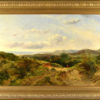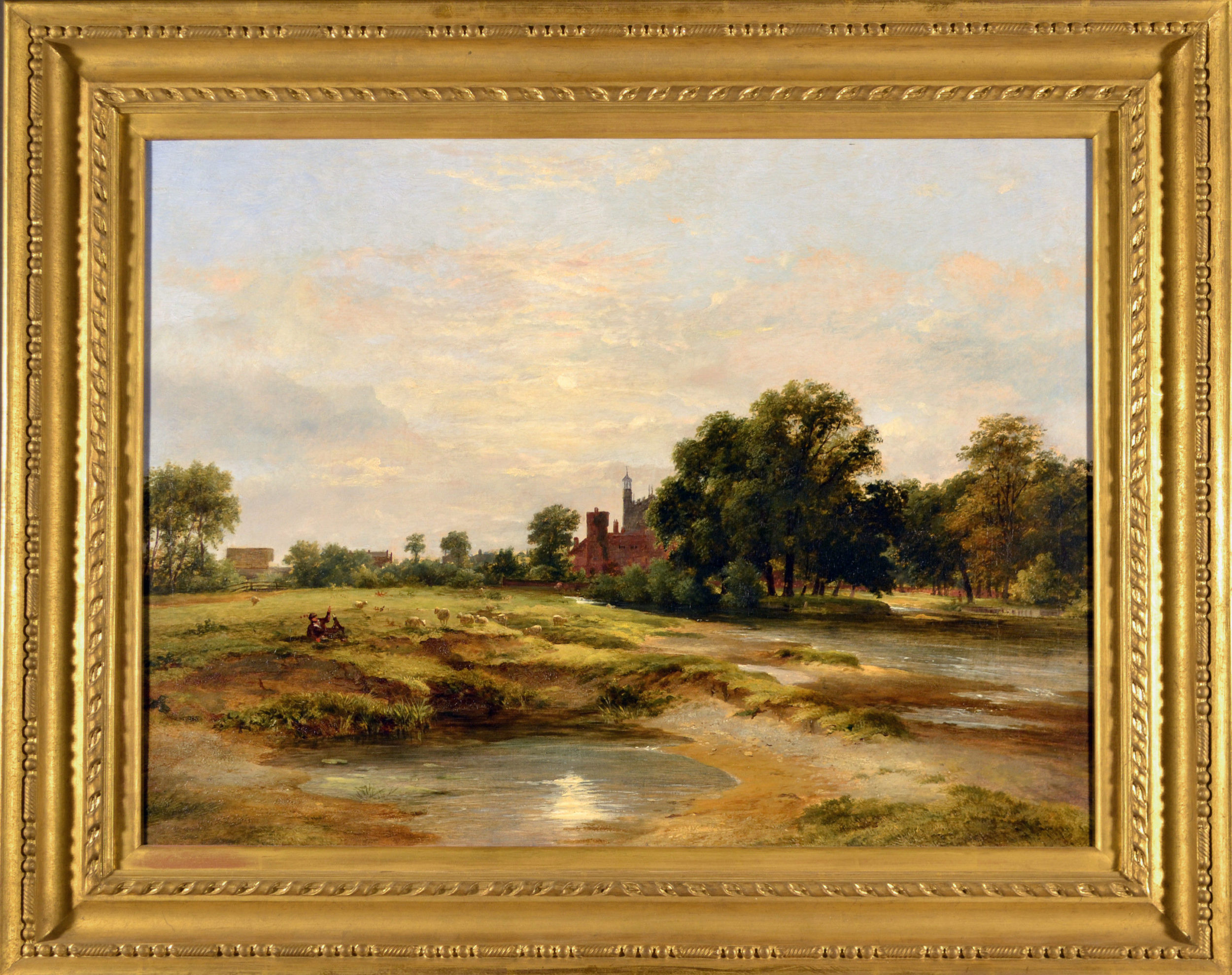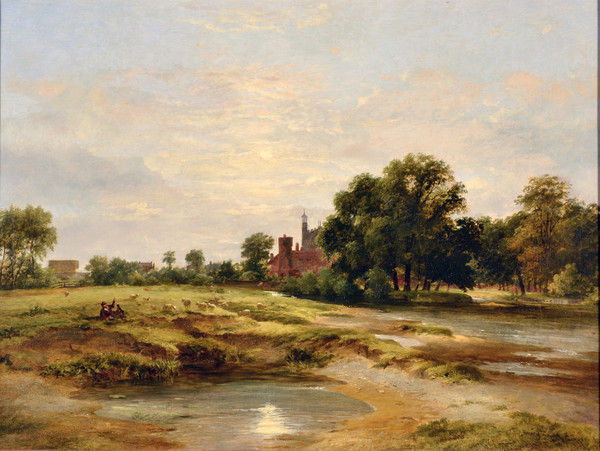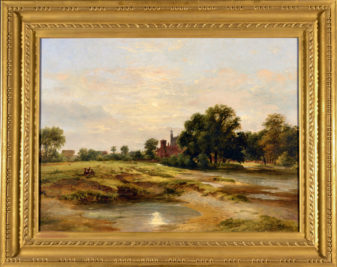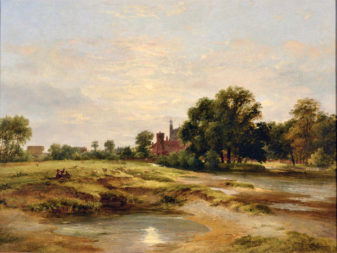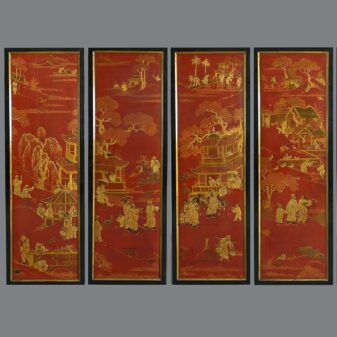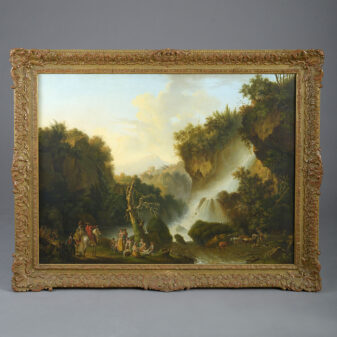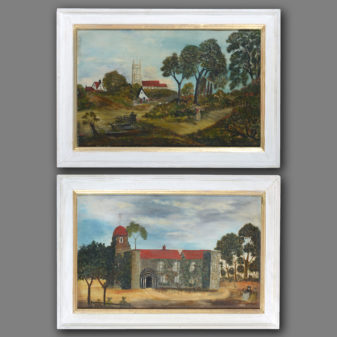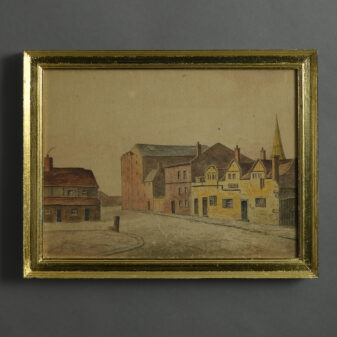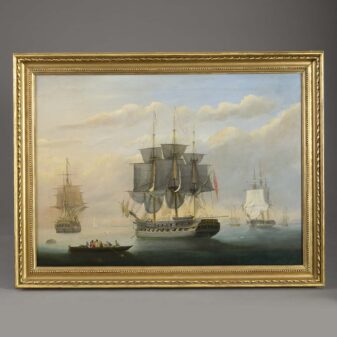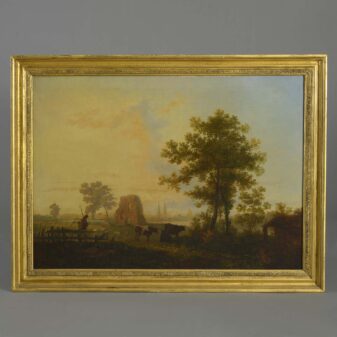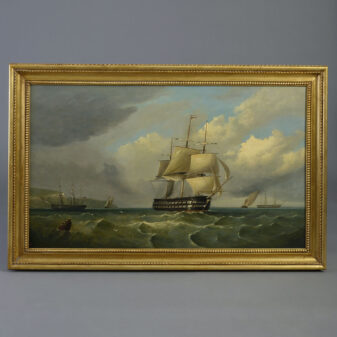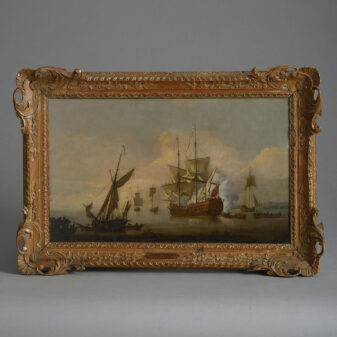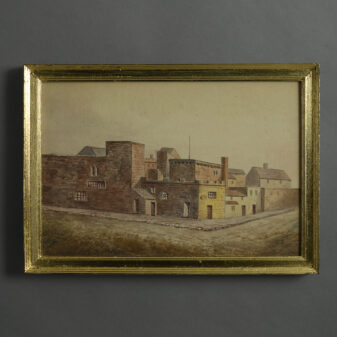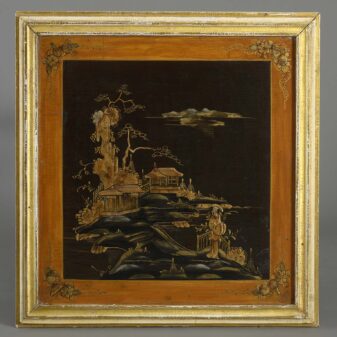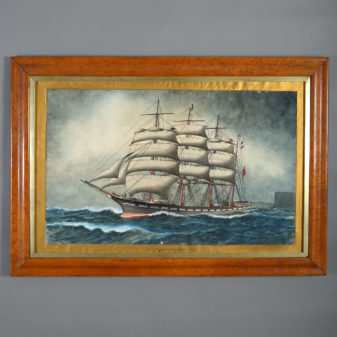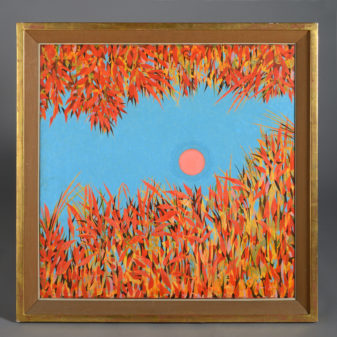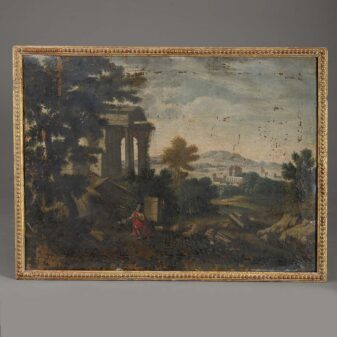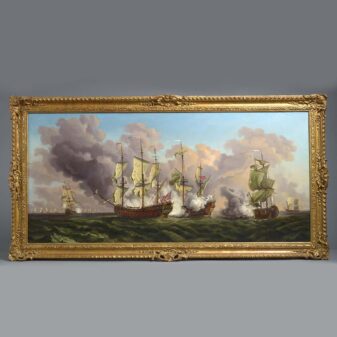Subtotal: £9,500
A View of Eton from Fellows’ Eyot
£7,800
SOLD
JAMES STARK (1794-1859)
James Stark was a landscape painter and watercolourist, born in Norwich on 19 November 1794, son of Michael a Scottish dyer. James was the youngest of 3 sons and was a pupil at the Norwich Grammar School. In 1811 Stark studied under John Crome Snr for 3 years then moved to London and entered the Royal Academy Schools in 1817. He became a friend of the painter William Collins who in turn knew both Linnell & Constable, and fell under the influence of these two great masters. Stark began exhibiting in 1811 but his first major success seems to have come in 1815 when the Dean of Windsor bought his painting, The Bathing Place – Morning at the British Institution. In 1818 his Penning the Flock was bought from the same gallery by the Marquis of Stafford and he sold 2 other works to aristocratic patrons. He subsequently sold pictures to the academicians Chantrey, Phillips, and Sir George Beaumont. In 1819 ill health forced him to return to Norwich where he remained unable to paint until 1830, he then took an active part exhibiting his work at the Norwich Society of Artists of which he had become a member in 1812. In 1818 he was he was awarded a prize of £50 by the British Institution. One of Stark’s early pictures, Lambeth, looking towards Westminster Bridge was bought by the Countess de Grey from the B.I in 1818 and is now in the Paul Mellon Collection. It shows that to begin with Stark worked in a fairly broad naturalistic style comparable with that of his fellow pupils. None of Stark’s exhibited works are explicitly described as out door oil sketches, but a number by him are known, and he was also a prolific sketcher in chalk and watercolours. His work shows the preoccupation with detail which, is featured in much of his work. However he is best known for his numerous glade scenes in imitation of Hobbema. He married Elizabeth Dinmore in 1821 and went to live in Yarmouth for a few years, before returning to Norwich in 1827. He then began work on a series of pictures, recording the local scenery; these were the basis for a book of 35 engravings, The Rivers of Norfolk. In 1839 the Norwich Mercury reported his landscapes were, “brilliant with beauty and light”, the exchange from Hobbema to nature is indeed a marvellous improvement. Stark had developed a style better suited to the London exhibitions and began to show a large number of works. His landscapes were much brighter. In 1830 he returned to London. In 1840 Stark moved to Windsor and was active for the following 10 years painting many views of the beautiful surrounding area. Though short, this was probably his most productive period with Stark at the height of his powers.
James Stark died on 24 March 1859.
Stark had a number of pupils, including Samuel Colkett, Alfred Priest and his son Arthur James Stark (1831 -1902).
Works represented: National Gallery of Scotland; Glasgow; Tate London; Victoria & Albert Museum; Manchester; Montreal; Norwich; Nottingham and many others.
(Framed size)

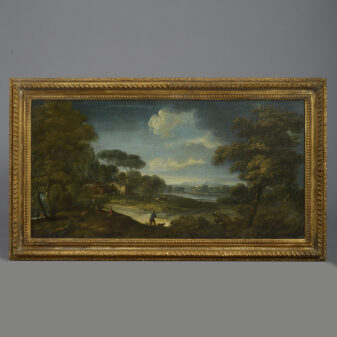 Follower of Salvator Rosa, An Extensive Pastoral Landscape with Lake, 18th Century Oil on Canvas
Follower of Salvator Rosa, An Extensive Pastoral Landscape with Lake, 18th Century Oil on Canvas 
